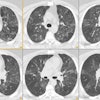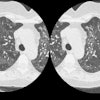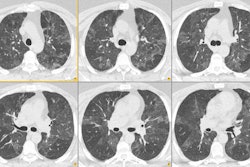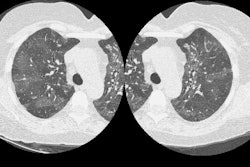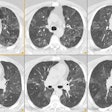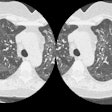Radiology 1996 Nov;201(2):447-455
Lung nodule enhancement at CT: prospective findings.
Swensen SJ, Brown LR, Colby TV, Weaver AL, Midthun DE
Department of Diagnostic Radiology, Mayo Clinic, Rochester, MN 55905, USA.
PURPOSE: To determine if lung nodule enhancement measured with computed tomography (CT) is directly related to the likelihood of malignancy and to nodule vascularity. MATERIALS AND METHODS: Radiologically indeterminate 7-30-mm pulmonary nodules were studied in 107 patients with malignant neoplasms (n = 52), granulomas (n = 51), and benign neoplasms (n = 4). Attenuation was recorded from serial thin-section CT scans before and after injection of contrast material. Twenty-four histologic specimens were graded after immunoperoxidase vascular staining with antibody to factor VIII-associated antigen. RESULTS: Malignant neoplasms were enhanced (median, 46.5 HU; range, 11-110 HU) statistically significantly more than granulomas and benign neoplasms (median, 8 HU; range, -10 to 94 HU) (P < .001). With 20 HU as the threshold for a positive test result, the sensitivity was 98%, specificity was 73%, and accuracy was 85% (prevalence of malignancy, 49% 52 of 107 nodules]). The degree of enhancement was statistically significantly related to the amount of central vascular staining (P < .001). CONCLUSION: Enhancement appears to be an indicator of malignancy and vascularity. These prospective findings corroborate previously reported results.
PMID: 8888239, MUID: 97043041
